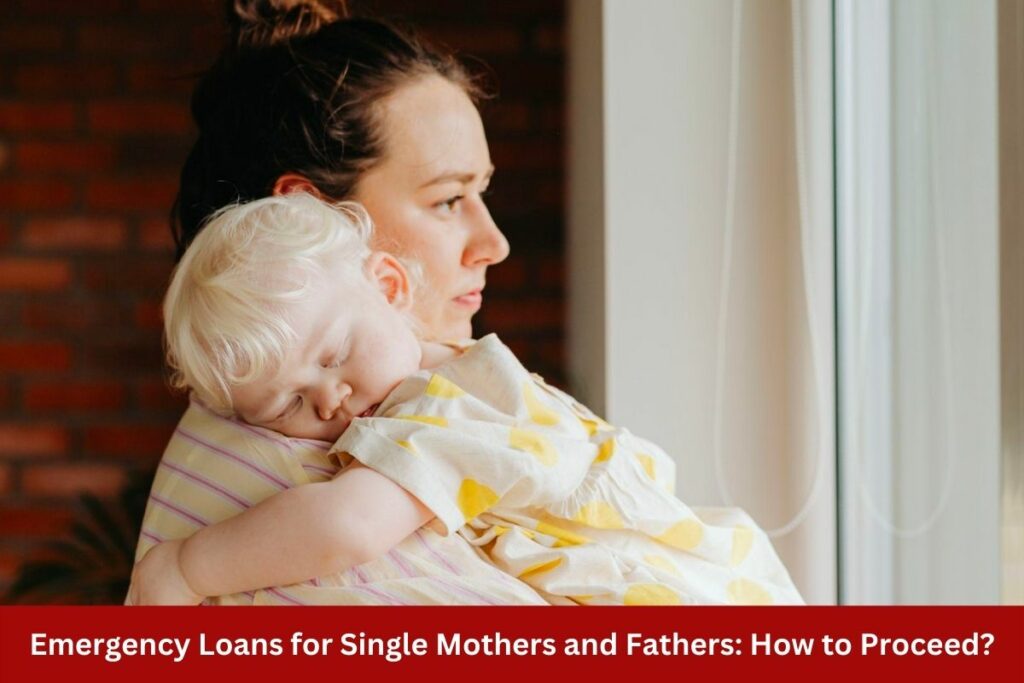More money for the increased child tax credit will be available this year. Learn how to receive half (or more) of your tax refund in the form of a tax credit.
Many qualified families received monthly checks worth up to $300 from the enhanced child tax credit during its first six months in 2017.
Parents can expect to receive extra money in their tax refunds this year, up to $1,800 per kid under the age of six and $1,500 for each child between six and seventeen.
People who opted out of advance payments last year will receive $3,600 or $3,000 per child once they file their tax returns this year, depending on their circumstances.
Keep track of Letter 6419 from the Internal Revenue Service to ensure that you receive the remainder of your money. It will inform you of the amount of money you received in 2021, as well as the number of qualifying dependents to calculate payments.
Before you file your taxes, double-check that all of the information on Letter 6419 is correct; otherwise, you run the risk of having your tax return delayed.
The following information will be useful as you prepare to file your taxes this year.
There’s also information on how you may file your 2021 tax return for free, how to avoid being tagged by the IRS, and why you might want to use a credit card to pay your taxes this year. This story will be updated regularly.
Don’t miss your child’s tax credit report from the IRS.
Families began receiving Letter 6419 from the Internal Revenue Service in late December. Please keep an eye on your mailbox if you have not yet got it because some letters are still in the mail delivery process.
That letter contains critical information regarding your child tax credit payments, which you should double-check for accuracy before submitting. For example, the number of dependents used to calculate the amount of money you get should be double-checked.
Do not become alarmed if you do not receive or misplace the letter. The IRS website, accessed through an online IRS account, contains all of the critical information you’ll need to file your tax return for the year 2021.
To view your advanced child tax credit payments and the availability of qualified children for the year 2021, log in and select “View my tax records” from the menu bar.
Due to some reporting mistakes in Letter 6419, the Internal Revenue Service (IRS) suggests that you double-check your information on the IRS website. The Internal Revenue Service (IRS) requires that the data in your online account be correct and up to date.
Also check: Texas governor orders companies to find reports of transgender children getting gender-confirming care.
How much child tax credit amount can you anticipate receiving this year?
If you and your family fulfill the income qualifying standards and get each advance payment between July and December 2021, you are considered to comply.
Then, when you filed your taxes in 2021, you can anticipate receiving up to $1,800 for each child under the age of 5, or up to $1,500 for each child between the ages of 6 and 17, depending on the age of the child.
However, your income level will impact the amount of credit you receive. There is no restriction to the number of eligible children for the enhanced child tax credit.
The benefit begins to diminish at a household income of $75,000 for single filers and $150,000 for married couples filing jointly. A total of $220,000 and $440,000 are required before phasing out.
If you opted out of partial payments before the first check was issued, you would get your full qualifying amount with your tax refund — up to $3,600 for each kid under the age of six and $3,000 for each child between the ages of six and seventeen.
You should receive a tax refund in 2021 for any missed payments due to IRS issues or because you dropped out of the program.
What if your child’s tax credit checks never came in 2021?
Whether it’s because of an IRS error or obsolete information, if you’re missing money from a previous check, you have two options: wait for the problem to be remedied when you file your taxes or file a payment trace with the Internal Revenue Service (IRS). Track your check to make sure it hasn’t already left the building before moving forward with the process.
If you haven’t filed taxes in a while, the Internal Revenue Service won’t have any information about your new dependant on file. If this is the case, you will not get any funds until filing your taxes.
Will the previous year’s monthly payments influence your tax refund?
The child tax credit payments you received this year may have an impact on your taxes in the future (for better or worse). Here’s how it’s done:
- You received an overpayment, and the IRS did not make any adjustments to the amount on subsequent installment payments. You’ll be required to reimburse me for this.
- You received money for which you were not eligible. You’ll have to reimburse the Internal Revenue Service.
- Your income has changed, and you have failed to notify the Internal Revenue Service of this change. It is possible that you will receive a greater or lesser tax refund or that you will owe money to the IRS, depending on whether your income was more or lower than the amount used by the IRS to compute your payment.
- Last year, you decided to opt out of the payments to increase your compensation this year.
- You were given money to help with the expenses of a child who turned 18 last year. You may have to repay the money.
The IRS might not require you to repay any money you received as an advance child tax credit in 2021 if you received more than you were entitled to receive. You may qualify for “repayment protection” based on your income level.
How to get your money if you had a newborn or adopted yet last filing your taxes
If you had a baby or adopted a child by the end of December, you’ll be entitled to a tax credit of up to $3,600 for that child when you file your taxes this year. Included in this figure is back pay for the advance payments received from July through December, as well as a portion of your refund.
You’ll likely receive that money when you declare your child on your tax return, which will alert the IRS to the fact that your family has expanded.
Why aren’t the increased child tax credit checks becoming extended?
Up to this point, the increased monthly child tax credit checks have expired and will revert to the original amount, barring an extension of the payments by a vote in Congress.
When the House of Representatives confirmed the Build Back Better bill in November, it included a renewal of the increase in the child tax credit and advance payments for future years.
While West Virginia Democrat Sen. Joe Manchin has stated that he will support the bill if a job requirement for parents is included, the legislation has been effectively killed by Manchin’s opposition.
Although President Joe Biden isn’t sure whether the improved child tax credit will be included in the Build Back Better legislation, he plans to break the package into smaller pieces. As additional information becomes available, we will update this article.
Here is who will receive above $1,800 per kid in cash
On July 15, about 36 million American households will start getting monthly checks from the Internal Revenue Service as a portion of the enhanced Child Tax Credit.
The federal program will provide up to $1,800 in cash to eligible families until December; however, one snag in the tax credit may cause some families to opt out of the federal program altogether.
President Joe Biden signed the expanded Child Tax Credit (CTC) into law as part of the American Rescue Plan, enacted to the financial crisis.
Through your efforts, you can boost the advantage from a $2,000 credit, which is taken annually when you file your taxes, to a maximum benefit of $3,600 for each child.
Half of the money will be divided into six installments from July through December, each paid out in cash every month. The remaining half will be received on your 2021 tax return.
According to White House Press Secretary Jen Psaki, who spoke on “CBS This Morning” last month, the Biden administration has suggested extending the monthly payments for another five years.
In addition, Psaki noted that more than a million girls had left the workforce due to the pandemic. “He believes that this is a critical benefit that will benefit families and help bring women back to work,” she added.
Individuals can get the CTC even if they do not owe federal income tax because it is “refundable.” According to the IRS, families will still be required to file a tax return or register through the IRS’s Non-filer portal to be eligible for the benefit.
The Internal Revenue Service will offer workshops on July 9 and 10 in a dozen places to assist persons who do not file a federal tax return in registering to receive monthly CTC payments from the IRS.
The initiative resembles the three rounds of stimulus checks that the Internal Revenue Service has sent to help people cope with the pandemic.
The increased CTC and the stimulus payments, for starters, are only available to qualifying lower- and middle-class families, with upper-income households being cut out of the program. Second, the IRS will deposit the payments immediately into the recipients’ bank accounts.
However, there is one significant distinction between the stimulus checks and the increased CTC, and that is how the Internal Revenue Service addresses overpayments.
When it came to the stimulus cheques, recipients were not required to return to the Internal Revenue Service if they received more money than they were entitled to. The expanded Child Tax Credit, on the other hand, is an exception.
“If you are receiving money and you do not qualify, you must opt-out of it,” said Mark Steber, chief tax information officer at Jackson Hewitt. “You’ll have to reimburse me for that money.”
In contrast, the treatment of overpayments in the stimulus payments amounted to “a gigantic ‘Get out of prison card,'” according to him.
In a recent announcement, the Internal Revenue Service (IRS) stated that “if you get an entire amount of advance Child Tax Credit payments that exceed the money of Child Tax Credit that you are eligible to claim on your 2021 tax year, you may be required to refund to the IRS few or all of that payment.”
Who passed for cash payments?
The CTC was increased to $3,600 for each child under the age of six and $3,000 for each child between the ages of six and seventeen under the American Rescue Plan. Previously, the credit had been restricted to children under 17 and had a maximum value of $2,000 per child.
Except for families with children who are 17 years old or younger as of December 31, 2021, families will only be eligible for the expanded credit if their household income falls below certain thresholds.
- Single taxpayers with incomes of $75,000 or less
- Heads of households must earn no more than $112,500 per year.
- For wedded couples filing a joint return and qualified widows and widowers, $150,000 or less is required.
On Tuesday, the Internal Revenue Service announced that it had launched a website that will allow people to determine whether they are eligible for the benefit, known as the Child Tax Credit Eligibility Assistant.
Your 2020 tax return (if you haven’t already filed for 2020) will be required to determine whether or not you will be eligible for the payments.
If people don’t have a record of their tax return, the IRS says they may be able to use an estimate based on their W-2s or 1099s to determine whether or not they are eligible.
The IRS clarified that the Child Tax Credit Eligibility Assistant is not a registration tool but rather a tool that determines whether or not a person is likely to qualify for the payments.
What if I have children, but my earnings are above that?
Families that earn more than those levels may still be eligible for a portion of the expanded tax credit — but only up to a certain amount.
The enhanced benefits will be tapered out for persons who earn around $20,000 more than those salary criteria, with each $1,000 increase in income resulting in a $50 reduction in the amount received by the family.
In other words, single filers with incomes up to $95,000 and married couples with combined incomes up to $170,000 would receive lesser payments. Still, if their combined incomes exceeded $170,000, they would be phased out of the expanded Child Tax Credit entirely.
Families that earn more than the phase-out limits, on the other hand, may still be eligible for the normal Child Tax Credit. The ordinary CTC of $2,000, which is deducted from your income tax return every year, is available to single parents earning up to $200,000 and married couples earning up to $400,000.
Higher-income families with incomes over specified limits are ineligible for either the normal CTC or the enhanced CTC.
How much will I receive for each kid?
Parents will be required to make the following payments:
- For each child under six, $300 per month is charged.
- Each youngster between the ages of 6 and 17 receives $250 each month.
- That implies that a qualifying family consisting of two parents who file a joint tax return and have two children under six will get $600 in monthly payments for six months, beginning on July 15 and concluding on December 15.
They will receive $3,600 in cash from the IRS for each of their two children throughout the tax year.
What should I do to receive the money?
Steber of Jackson Hewitt had nothing to say, as is customary. If their status is the same as it was on their 2020 tax return, “they have to do nothing,” Steber explained.
“Their address must be the same, their bank account must be the same, and they must have the same number of dependents.”
A total of 36 million eligible families have already received letters from the IRS, based on either their 2019 or 2020 federal income tax returns, or if they provided information through the “non-filers tool” on the IRS.gov website last year to register for a stimulus payment that was qualified based on that information.
The Internal Revenue Service stated it will issue a second letter soon to estimate qualified families’ monthly payouts, which will start hitting millions of bank accounts on July 15 and continue until December 31.
Can I change my bank account with the IRS?
Yes, the IRS has made that option available through its Child Tax Credit Update Portal, which you may access here. People can find out if they can receive funds through direct deposit by visiting the website.
That is where the payment for July will be made, though consumers can update their bank account information so that the payment for the following month (which falls on August 13) will be sent to a different bank account.
According to the IRS, customers can change their bank routing and account numbers through the site, and they will also be required to declare whether the account is a checking or savings account, among other things.
Because only one bank account number is permitted for each receiver, consumers will not divide the money between accounts.
What if the IRS doesn’t own my bank account details?
Alternatively, if the tax agency does not have your bank account number on file in its Child Tax Credit Update Portal, the check will be delivered to you via regular mail.
People can, however, choose for direct deposit by submitting their bank account details using the same portal where they submitted their initial application.
Your bank routing number and account number and whether it is a savings or checking account will be required to be entered.
What To Do I don’t file a federal income tax return?
The IRS depends on tax returns to compute the enhanced CTC, which means some people, such as low-income households who aren’t required to submit tax returns, may be left out in the cold.
In that situation, the Internal Revenue Service (IRS) has developed a portal for those families to apply for the tax credit.
Non-filers, according to the IRS, will be required to disclose personal details such as their date of birth and Social Security cards for themselves and their kids to avoid being penalized.
The bank’s route number and account number into which they have a deposit can also be entered to receive deposits if they have a bank account.
Who must opt out of the CTC?
Because the Internal Revenue Service (IRS) relies on tax returns to determine payments, it may not always have the most up-to-date information about taxpayers, such as their most recent income or the number of children in their household.
There is a risk that some taxpayers will receive cash payments even though they are not eligible, or that some taxpayers will receive less than they should — for example, if they had a child in 2021, the IRS would be unaware of this because it is looking at either the 2020 or 2019 tax returns to determine eligibility for the cash payment program.
Another group of people may wish to opt out of the payments to receive a larger tax credit when they file their taxes by April 2022, and divorced parents with children may want to opt-out if their ex-spouses claim their children on their tax returns in 2021, among other reasons.
One of the problems with overpaying is that taxpayers will have to reimburse any money they have received.
That may happen if, for example, your income in 2020 during the pandemic qualified you for the enhanced CTC, but your income in 2021 was higher and disqualified you from receiving the enhanced CTC.
You could be looking at a future tax bill from the Internal Revenue Service (IRS) in such a situation.
How can I opt out of the funds?
According to the IRS, people will opt out through an online interface, which is now available. The Child Tax Credit Update Portal is a service that allows users to un-enroll from the tax rebate before the first payment is issued on July 15. The program was developed by the IRS and is available online.
According to the IRS, families can utilize the password-protected CTC Update Portal as long as they have internet connectivity and a smartphone or computer and have a password.
According to the company, people will view their payment history and make changes to their bank account information and mailing address when the portal is upgraded later this year.
There is a deadline for removing yourself from the payment plan. According to the IRS, consumers must opt out by June 28 to avoid making the first payment on July 15.
Alternatively, if you miss the deadline, you can unenroll for the next month by using the CTC Update Portal by 11:59 p.m. on the third day before the first Thursday of that month.
That doesn’t sound like it will be straightforward, but the dates to unenroll are as follows:
- For the August payment, you must submit your application by August 2.
- The payment for September is due on August 30.
- The payment for October is due on October 4.
- November 1 is the deadline for the November payment.
- The deadline for the December payment is November 29.
Can the Child Tax Credit payments be garnished?
Yes, according to the Internal Revenue Service. Several creditors can garnish payments, including state and local governments and private debtors.
According to the Internal Revenue Service, some governments and banking institutions have agreed to protect their constituents and CTC from garnishment.
For example, the Attorney General of California recently stated that creditors are not permitted to garnish CTC payments made to citizens of the state.
Will the CTC payments be decreased for federal back taxes?
According to the IRS, this is not the case. The Internal Revenue Service will not deduct money from your monthly payments to satisfy federal taxes that you may still owe.
On the other hand, the IRS advised that if you get a refund when you file your 2021 taxes, any remaining cash from the CTC included in the return may offset tax debts in the future.




